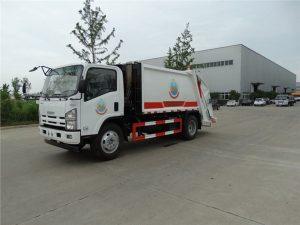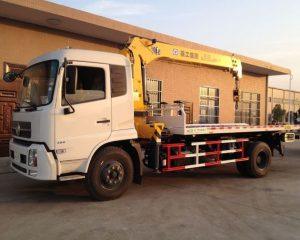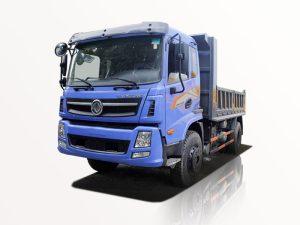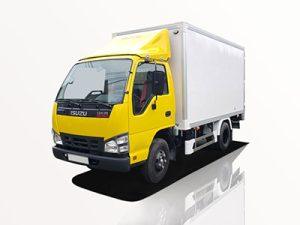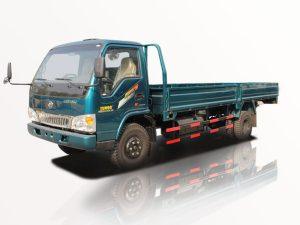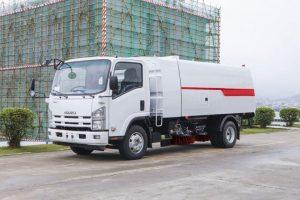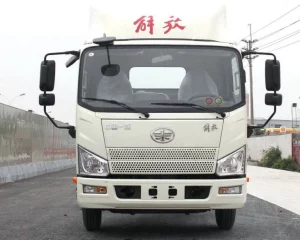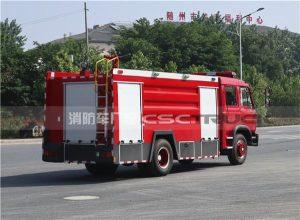Monday to Saturday - 8:00 -17:30
Complete Guide to Rollback Flatbed Trucks: Features, Benefits, and Tips
The rollback flatbed truck is an indispensable vehicle in various industries, including transportation, construction, and towing. Its design offers versatility for carrying different types of loads, making it a favored choice for businesses and individual operators alike. In this article, we will delve into the various aspects of rollback flatbed trucks, including their features, benefits, uses, maintenance tips, and more.
What is a Rollback Flatbed Truck?
A rollback flatbed truck, often referred to as a tow truck, features a flatbed that can be tilted down to enable vehicles and heavy equipment to be rolled onto it easily. The unique design secures the load during transportation and provides a seamless process for loading and unloading. This type of truck is widely used for towing broken-down vehicles and transporting heavy machinery.
Key Features of Rollback Flatbed Trucks
1. Flatbed Design
The primary feature of a rollback flatbed truck is its flatbed, which provides a stable platform for carrying heavy or oversized loads. The flatbed can either be stationary or equipped with a hydraulic system to tilt and roll back.
2. Hydraulic System
The hydraulic system is critical for tilting the flatbed, allowing for a smooth and effortless loading and unloading process. This feature is particularly beneficial in situations where vehicle access is challenging.
3. Winch System
Many rollback flatbed trucks come equipped with a winch system, which enables the driver to pull vehicles up onto the flatbed securely. The winch is a crucial tool, especially when dealing with vehicles that cannot be driven onto the flatbed.
4. Safety Features
Rollback flatbed trucks are typically equipped with various safety features, including wheel straps, chains, and reflective markings. These features help ensure that the load is secure during transportation and that the vehicle is visible to other drivers.
5. Engine Power and Capacity
Rollback flatbed trucks are designed to carry heavy loads, so they are usually equipped with powerful engines. These trucks can vary in capacity, but most can handle loads ranging from 10,000 to over 20,000 pounds.
Benefits of Using a Rollback Flatbed Truck
1. Versatility
Rollback flatbed trucks are versatile vehicles capable of transporting a wide range of items, including cars, construction equipment, and even recreational vehicles. This adaptability makes them a valuable asset for businesses in various sectors.
2. Efficiency in Loading and Unloading
The tilt and rollback design facilitates quick and efficient loading and unloading of vehicles. This efficiency can save time and reduce the risk of damage to the vehicle or equipment being transported.
3. Enhanced Safety
Using a rollback flatbed truck enhances safety during transportation. The vehicle remains stable on the flatbed, minimizing the risk of damage or accidents. Additionally, the various safety features provide peace of mind during transit.
4. Cost-Effective Solution
Investing in a rollback flatbed truck can be cost-effective for businesses and individuals who frequently require towing services or need to transport oversized items. Rather than hiring a towing service, owning a rollback truck can reduce costs in the long run.
Common Uses of Rollback Flatbed Trucks
1. Towing Services
One of the most common uses of rollback flatbed trucks is in the towing industry. They can effortlessly transport broken-down vehicles to repair shops, providing timely assistance to motorists in need.
2. Transporting Heavy Equipment
Construction and landscaping companies often utilize rollback flatbed trucks to transport heavy equipment, such as excavators, bulldozers, and generators. This capability is essential for getting equipment to job sites efficiently.
3. Vehicle Recovery
Rollback flatbed trucks play a critical role in vehicle recovery operations, especially during accidents. Their design allows for safe transportation of damaged vehicles without further compromising their condition.
4. Moving Recreational Vehicles
Owners of boats, RVs, and ATVs often rely on rollback flatbed trucks for transportation, allowing them to easily move their vehicles for recreational purposes. These trucks provide a secure means of transport for valuable equipment.
Choosing the Right Rollback Flatbed Truck
1. Assess Your Needs
Before selecting a rollback flatbed truck, assess your needs carefully. Consider the types of loads you will be transporting, the weight capacity required, and the frequency of use. This evaluation will help you narrow down your options.
2. Research Models and Brands
Not all rollback flatbed trucks are created equal. Research various models and brands to find one that offers the best features and performance for your needs. Look for user reviews and ratings to gauge reliability and customer satisfaction.
3. Consider the Cost
Rollback flatbed trucks can vary significantly in price based on brand, model, and features. Set a budget before starting your search and be prepared to weigh the benefits of additional features against cost.
4. New vs. Used
Decide whether you want to purchase a new or used rollback flatbed truck. New trucks offer the latest features and warranties, but used trucks can be more budget-friendly. Inspect used trucks thoroughly to ensure they are in good working condition.
Maintenance Tips for Rollback Flatbed Trucks
1. Regular Inspections
Conduct regular inspections of your rollback flatbed truck to identify any potential issues early on. Check the hydraulic system, winch, brakes, tires, and lights regularly to ensure everything is functioning correctly.
2. Keep It Clean
Regular cleaning of your rollback flatbed truck not only keeps it looking good but also helps prevent rust and paint damage. Clean the flatbed surface, especially after transporting equipment or vehicles that may leave residue or dirt.
3. Change Fluids and Filters
Perform regular oil changes and replace filters as recommended by the manufacturer. Proper lubrication and clean filters help ensure optimal engine performance and extend the lifespan of your truck.
4. Take Care of the Tires
Check tire pressure regularly and inspect for wear and tear. Properly inflated and well-maintained tires contribute to better fuel efficiency and improve safety during transportation.
5. Store Properly
If you do not use your rollback flatbed truck for extended periods, ensure it is stored properly. Keep it in a dry, sheltered area to protect it from the elements and reduce the risk of rust and deterioration.
Practical Examples of Rollback Flatbed Truck Use
1. Emergency Response
Imagine a scenario where a vehicle breaks down on a busy highway. A rollback flatbed truck can arrive quickly to tow the vehicle away from traffic, minimizing the risk of further accidents.
2. Construction Site Transport
A construction company needs to move an excavator to a job site several miles away. A rollback flatbed truck makes it possible to transport the excavator efficiently, ensuring it arrives safely and on schedule.
3. Towing Service for Broken Cars
A person finds themselves stranded after a car accident. A local towing service utilizes a rollback flatbed truck to recover the vehicle gently, preventing further damage.
Cost Considerations for Rollback Flatbed Trucks
1. Initial Purchase Price
The initial purchase price of a rollback flatbed truck can vary widely based on make, model, and features. Prices can range from $20,000 to over $100,000 for high-end models.
2. Operating Costs
Operating costs include fuel, maintenance, insurance, and repairs. Consider these costs when calculating the total investment required for owning a rollback flatbed truck.
3. Financing Options
Explore financing options if you need assistance covering the purchase price. Many dealerships offer financing plans that can help you manage the cost over time.
Frequently Asked Questions (FAQ)
1. What is the typical weight capacity of a rollback flatbed truck?
Typically, rollback flatbed trucks can carry loads ranging from 10,000 to over 20,000 pounds, depending on the model and specifications.
2. Can a rollback flatbed truck be used for general transportation?
Yes, rollback flatbed trucks can be used for general transportation, especially for oversized items or vehicles that are difficult to transport using standard trucks.
3. How can I determine if a used rollback flatbed truck is in good condition?
Inspect the truck thoroughly, looking for signs of wear, rust, and mechanical issues. If possible, take a trusted mechanic with you to assess the vehicle before purchase.
4. What safety features should I look for in a rollback flatbed truck?
Look for features such as wheel straps, reflective markings, a winch system, and quality lighting for improved visibility during transport.
5. How often should I perform maintenance on my rollback flatbed truck?
Regular maintenance should be performed according to the manufacturer’s recommendations, typically every 5,000 to 7,500 miles, or more frequently if the truck is used heavily.
6. Are there specific insurance requirements for rollback flatbed trucks?
Yes, insurance requirements vary by state and usage. It’s advisable to consult with an insurance agent familiar with commercial vehicle insurance for specific coverage options.


